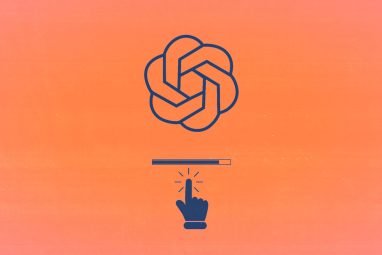Why Large Quantitative Models Matter More Than You Think
As generative AI captured the world’s attention, Large Quantitative Models are solving the hardest problems in energy, healthcare, and industry.
News
- botim money, Binance sign MoU to expand crypto access in the UAE
- IBM in Talks to Buy Confluent in $11 Billion Deal: Report
- Qadi Raises Funds to Build MENA’s First AI Legal Compliance Agents
- UAE Targets 60 Trillion AI Tokens To Become 'Factory of Intelligence'
- AI Godfather Geoffrey Hinton Says Future Jobs Won’t Come Close to Those Lost
- 116M EVs To Be On Road by 2026, Predicts Gartner

[Image source: Krishna Prasad/MITSMR Middle East]
For all the attention paid to generative AI (Gen AI) and large language models (LLMs), the deeper foundations of artificial intelligence (AI)—mathematics, simulation, and numerical reasoning—have always powered some of the most impactful applications in science and industry.
From predictive models in finance to computational fluid dynamics in aerospace, AI has long supported domains where quantitative precision matters more than conversational fluency. What’s changing is the level of scale and adaptability. A new generation of systems—Large Quantitative Models (LQMs)—are elevating these capabilities by combining domain-specific data, advanced algorithms, and real-time simulation to solve the harder numerical problems in the world.
“LQMs are designed to handle quantitative data with the same scale and adaptability we’ve seen in LLMs,” says Stefan Leichenauer, VP of Engineering at SandboxAQ. “But the applications are fundamentally different.”
From LLMs to LQMs: Two AI Paradigms
While LLMs excel at parsing and generating natural language, LQMs specialize in modeling physical systems, forecasting complex behaviors, and solving scientific equations.
| Feature | Large Language Models (LLMs) | Large Quantitative Models (LQMs) |
| Core Input | Natural language text | Structured numerical and scientific data |
| Function | Pattern recognition, language generation | Simulation, prediction, optimization |
| Training Data | Web-scale textual corpora | Scientific laws, simulations, domain-specific datasets |
| Typical Domains | Customer support, content generation, legal tech | Biopharma, aerospace, energy, financial services |
| Output | Text, summaries, classifications | Physical simulations, numerical predictions, scenario models |
Unlike LLMs—which often generate probabilistic guesses—LQMs are designed to produce high-fidelity, domain-specific predictions grounded in physics, chemistry, or mathematical logic.
Case Box: Saudi Aramco’s Emissions Modeling with LQMs
As Saudi Aramco pursues net-zero goals while maintaining operational efficiency, it is leveraging an LQM-powered differentiable computational fluid dynamics (CFD) solver.
This system simulates how gases and liquids interact inside refineries and other processing facilities—enabling the company to optimize outputs, reduce emissions, and improve energy efficiency without compromising throughput.
“The unique strength of LQMs in the petrochemical industry lies in their ability to model complex chemical reactions with high fidelity,” says Marianna Bonanome, Head of AI Strategy & Partnerships at SandboxAQ. “Even with sparse or highly specialized datasets, they optimize refining processes, advance catalyst design, and support carbon capture innovation.”
Beyond Oil: The Industries Being Transformed by LQMs
Aramco is just one example. LQMs are reshaping operations across sectors where precision is paramount:
- Biopharma: LQMs integrate genomic sequences, clinical trials, and medical research to predict molecular behavior—accelerating drug discovery with a level of precision that static analytics can’t match.
- Advanced Manufacturing: These models optimize workflows, predict machine failure, and refine material usage—reducing cost and downtime.
- Aerospace: By modeling extreme physical conditions with precision, LQMs are redefining how engineers approach aircraft design, stress testing, and thermal regulation.
- Finance: From asset pricing to portfolio optimization, LQMs bring a data-driven edge to markets where small advantages compound over time.
What unites these industries is their dependence on numerical decision-making and their limitations when using language-centric tools to solve math-based problems.
Strategic Adoption: Where to Begin
LQMs are already delivering real-world impact for industry pioneers today. However, broader market adoption has been hindered by the complexity of implementation. Deploying LQMs isn’t plug-and-play—they demand cross-functional expertise, rigorous data discipline, and significant engineering investment. This makes in-house development challenging unless organizations are prepared to make significant upfront investments. And securing such investment depends on a compelling business case, which requires leaders to identify high-value applications within their operations.
Because of their architectural complexity, Bonanome emphasizes the importance of identifying the right problem before choosing the model.
“Start by asking: What’s the quantitative challenge? Can it be described in terms of numerical data?” she advises. “That’s where the business case begins.”
For example:
- In biopharma, a challenge might involve predicting how proteins bind.
- In energy, it might mean optimizing the charging behavior of battery cells.
- In aerospace, it could involve simulating air resistance across different altitudes and velocities.
Once LQM project leaders have pinpointed the quantitative problem, they must assess the spectrum of data and tools available to address the problem.
Leichenauer suggests asking: What is our approach today? Where are the bottlenecks? What is preventing us from achieving the results we want to achieve?
Depending on the answers, the appropriate LQM strategy may differ:
- If tools already exist but are too complex or slow to scale manually, the LQM can orchestrate and scale those tools through AI-driven optimization.
- If data is sparse or incomplete, the focus may shift to high-fidelity simulation that fills the gaps—generating synthetic data or refining existing datasets to improve accuracy.
- If both tools and data are lacking, the LQM must be built as a full-stack solution—integrating simulation, learning, and domain knowledge into a bespoke model.
“There’s no such thing as a single LQM system to solve all problems,” Leichenauer explains. “The exact specification must be shaped by the structure of the problem itself.”
Most importantly, organizations must define the outcomes that matter. Will the LQM’s outputs meaningfully impact business performance metrics—such as product yield, energy efficiency, or R&D cycle time?
“Some LQMs can predict business-centric performance metrics like battery efficiency many times faster than other models,” he adds. “That leads to faster innovation, reduced costs, and a direct competitive advantage.”
When done right, this structured, problem-first approach transforms LQMs from experimental tools into strategic assets leading to breakthroughs that would be impossible with conventional methods alone.
Integration: LQMs and LLMs, Not Either-Or
LQMs are not replacements for LLMs; they often work in tandem. In hybrid systems, an LLM might extract critical data from unstructured sources—like journal articles or lab reports—before passing it to an LQM for modeling and prediction.
“LLMs can serve as important modules within a larger LQM system,” Bonanome notes. “Using the natural language processing power of an LLM as a submodule, they can extract key features from raw, unstructured data. The resulting numerical representations are processed with quantitative models, enabling real-time analytics, scenario simulations, and optimized decision-making.”
This integration has significant potential in industries that require scientific precision. In biopharma, for example, AI can help predict molecular behavior in drug discovery by merging insights from clinical data and research articles. In energy, simulation models of battery performance become more accurate when qualitative research on material properties is integrated with quantitative test results. Similarly, aerospace and other high-tech fields benefit from combining real-time data with rigorous scientific metrics, leading to more informed decisions and innovative solutions across complex challenges.
From Pilot to Scale: Measuring ROI
For many organizations, the path to LQMs begins with a proof-of-concept (PoC) focused on a single, high-value use case. But scalability and long-term ROI must be considered from the start.
“It’s important to assess an LQM’s value before getting to the point of scale-up. This is the same kind of challenge enterprises face when deploying any AI solution, whether it’s LQMs, LLMs, or something else,” Leichenauer says.
This acceleration, in turn, can generate:
- Faster time-to-market
- Reduced R&D costs
- Competitive differentiation
- Even breakthroughs that reshape entire industries
What’s Next for LQMs
Adoption remains challenging due to the need for:
- Deep domain expertise
- Advanced simulation tools
- High-quality data
- Cross-disciplinary collaboration
Yet as ecosystems mature, tools democratize, and strategic use cases emerge, adoption is expected to accelerate in scientific and engineering-driven sectors.
“Today, LQMs are solving the most mission-critical problems,” Leichenauer concludes. “And that’s exactly where the future lies.”





